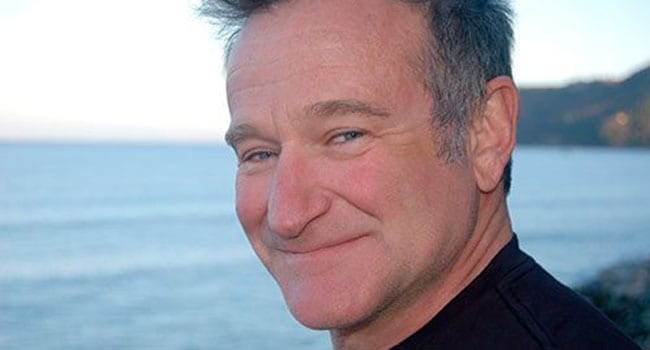 Three years ago, comic icon Robin Williams was found dead. His death was subsequently confirmed by California police as a suicide. The coverage was overwhelming: articles, blog posts, live coverage, television segments and an outpouring of emotion over social media.
Three years ago, comic icon Robin Williams was found dead. His death was subsequently confirmed by California police as a suicide. The coverage was overwhelming: articles, blog posts, live coverage, television segments and an outpouring of emotion over social media.
There have been similar public responses more recently with the deaths of Chris Cornell, frontman for bands Soundgarden and Audioslave, who died by suicide last May, and Chester Bennington, lead singer for Linkin Park, who died by suicide in July.
The sheer volume of coverage is overwhelming when we consider that, not long ago, the media refused to report on suicide.
The “contagion effect” is the argument that editors, journalists and academics used for decades to justify the exclusion of suicide from the news.
“Suicide contagion” is described by the U.S. Centers for Disease Control and Prevention as “a process by which exposure to the suicide or suicidal behaviour of one or more persons influences others to commit or attempt suicide.”
But by choosing not to report on mental health or suicide, journalists are only perpetuating the stigma for those living with a mental illness.
Because mental health and suicide were hidden from the public eye for so many years, a lot of misinformation built up in the public consciousness. This made it much more complicated for journalists to report factually and carefully when they finally decided to break their silence.
Such topics are much more complicated to report on than they first appear. This may be why we’ve seen some harmful reporting. For example, Shepard Smith from Fox News suggested that Williams took the coward’s way out.
Talking about suicide is important. Doing so helps dispel myths and combat stigma. But journalists need to report thoughtfully and with the right intentions.
I spoke with Cliff Lonsdale, author of Mindset: Reporting on Mental Health to get his thoughts on suicide coverage and how the media handled the death of Williams. He told me that for each example of bad reporting, there was much more evidence of good reporting.
“I think it bears out the fact that people are really trying now to get this right,” he said. “And there has been quite a lot of evidence of that effort out there.
“What we need to do as journalists is to remember what our role in society is. It is, among other things, to figure out where society isn’t working and point it out. If the emperor has no clothes, it’s the job of the journalist to point it out.”
The first step to better reporting and dialogues on mental health and suicide? Don’t be afraid.
Suicide contagion
Many academics and journalists who report on mental health have discredited the notion of suicide contagion. Others argue for its validity.
Madelyn Gould, a psychiatry professor at Columbia University, told the New York Times, “Suicide contagion is real.” Her article on media contagion and suicide among youth argues that “suicide clusters” form when youth are exposed to the suicide of another individual.
Lonsdale said the science behind the theory is “problematic.”
Statistics on suicide, as reported by Liam Casey for the Ryerson Review of Journalism, reveal that there has been no increase in the number of suicides following media attention.
In a statement for Mindset, health reporter Andre Picard said, “When the media mostly stopped covering suicides, there was no clearly commensurate drop in deaths. And although Canadian media have paid growing attention in the past few years to instances of teen suicide, the overall suicide rate among teens remains strikingly stable.”
Another issue is that the notion of suicide contagion sometimes gets conflated with the idea of “copycat suicides.” The terms are often used interchangeably – for example, in this article from the Washington Post.
“Copycat is usually – in my mind, anyway – linked with method. That’s a separate issue from the idea of contagion,” said Lonsdale. “The real problem with it is it just petrifies the journalist. It makes them think they shouldn’t do anything in that area. So all of the good that they can do stops as well.”
The takeaway is that it’s not journalists reporting on suicide itself that’s the problem. Instead, it’s how they choose to do it.
Don’t report the details
There’s no good excuse for journalists to report extensively on the details of a suicide, although a reader could have easily been fooled into thinking it’s journalistic convention in the aftermath of Williams’ death.
Almost every major news source reported, in excruciating detail, the method Williams used to kill himself. In some articles, which I won’t link to here, the headlines of the articles were brutally literal: “This is how Robin Williams killed himself.”
Not only is this type of reporting unethical and disrespectful, it’s also harmful. Although suicide contagion may be disputed, Lonsdale says sometimes there’s a rise in the methods used for a specific suicide following extensive reporting on the details.
So while reporting on suicide might not convince someone to have suicidal thoughts, it might convince someone who is already at risk to change their method of doing so.
You don’t know what you don’t know
It’s okay for a journalist to admit when they don’t know something. In fact, it’s much better for them to do so than to speculate or simplify.
“We crave simplicity,” said Lonsdale. “Clearly depression is a major factor in [Williams’] case, but so are all his addiction issues. And now we are beginning to hear that there were some other medical issues, too. It’s usually not as straightforward as we think it is. Human beings are complicated and we journalists love simplicity. We want one straightforward reason for everything so we can put it into our stories and keep it tight.
“Life isn’t like that. And especially not in this area.”
When journalists report on suicide, they have the opportunity to complicate the issue and challenge long-held notions. Complexity shouldn’t scare journalists away from doing their jobs. Instead, it should force them to do them better.
Why, why, why
Some of the best reporting on Williams’ suicide immediately moved away from the question of “What?” and instead began asking, “Why?”
With news that’s shocking or tragic, there’s a tendency to linger too long on the details. Often the coverage forgets to look at the context and deeper issues.
“We need to get beyond the ‘Oh wow!’ and to thinking, ‘Oh, why?’ As soon as you say that to yourself, you are probably on the right track,” said Lonsdale. One of the best examples of this type of reporting is this article by Picard.
But it’s not always easy. We have to remember that Picard is a health reporter – widely recognized as one of the best – and spends a lot of time thinking about these issues. He’s also afforded plenty of column inches to expound on a situation, something that’s at a premium for most of today’s jack-of-all-trades journalists.
“It’s tougher for the general reporter and we should have some sympathy for them,” said Lonsdale. “The bottom line here is we aren’t as bad sometimes as we think we are. If we get a bit more confidence about what we’re doing, then we’re going to get better and better at it.”
Coverage of Williams’ death wasn’t perfect. In fact, there were some horrible examples by some very reputable media outlets. But there were also some positive examples of coverage.
“Journalists have an opportunity to do a lot of good in this area. And yeah, we’ll make some mistakes, because we always make some mistakes,” said Lonsdale.
“But if we are intending to generate light rather than heat, then we are going to be moving the issue forward. We are going to be doing our job as journalists. We’re not doing our jobs as journalists if we run the other way.”
Useful resources
- Mindset Media Guide
- Ponyter – Reporting on Suicide
- Canadian Media Guidelines from the Canadian Association for Suicide Prevention
- National Suicide Prevention Hotline: 1-800-273-8255
- Canadian Association for Suicide Prevention Crisis Centres
Britney Dennison is a research adviser at Men’s Health Research, deputy director of the Global Reporting Centre and an award-winning journalist.
Britney is a Troy Media Thought Leader. Why aren’t you?
The views, opinions and positions expressed by columnists and contributors are the author’s alone. They do not inherently or expressly reflect the views, opinions and/or positions of our publication.


